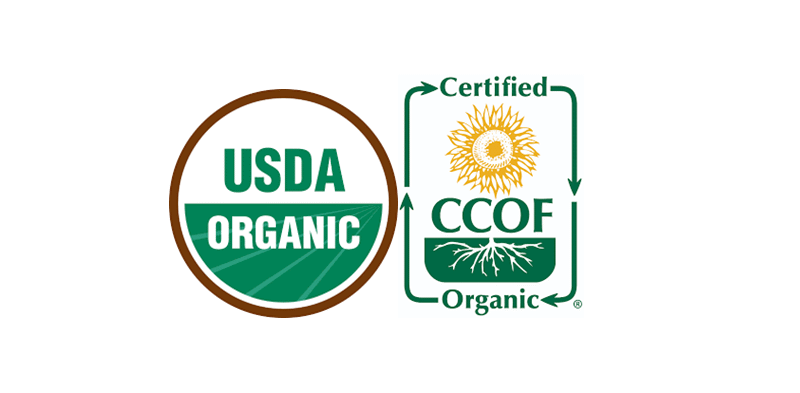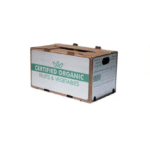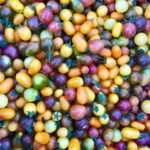As consumer demand for organic produce surges, more growers are considering transitioning to organic farming. But earning the USDA Certified Organic label isn’t simply about avoiding pesticides- it’s a comprehensive process governed by stringent rules and continual verification. This blog outlines the complete journey to obtain and maintain organic certification for vegetables, fruits, and herbs.
🌱 What Does “Organic” Really Mean?
Under the USDA National Organic Program (NOP), organic produce must be:
- Grown on soil free from prohibited substances for at least three years prior to harvest.
- Cultivated without synthetic fertilizers, herbicides, pesticides, sewage sludge, ionizing radiation, or genetically modified organisms (GMOs).
- Managed through practices that foster soil health, biodiversity, ecological balance, and animal welfare.
The “Certified Organic” seal signifies compliance with these standards through documented plans, inspections, and verification by accredited agencies.
🛤 Step-by-Step: How to Get Organic Certification
- Understand Eligibility & NOP Standards
Before applying, producers must meet the core requirements:
- Use only NOP-approved inputs (fertilizers, pesticides, herbicides).
- Maintain buffer zones from non-organic fields to avoid contamination.
- Keep detailed farm and input records (seed source, planting dates, pest control, harvest records).
- Ensure land has had no prohibited substances for at least 3 years.
Familiarize yourself with:
- The NOP Handbook
- NOP Organic Regulations (7 CFR Part 205)
- The National List of Allowed and Prohibited Substances
- Develop an Organic System Plan (OSP)
The OSP is the backbone of certification and outlines:
- Crop rotation practices
- Soil fertility strategies
- Pest, weed, and disease management
- Seed sourcing and planting methods
- Recordkeeping and input tracking systems
Each operation’s OSP is unique and must be updated annually or whenever practices change.
- Choose an Accredited Certifying Agent
Select a USDA-accredited certifying agent—a private or state organization authorized to inspect and approve organic farms. Some well-known agents include:
- Oregon Tilth
- CCOF (California Certified Organic Farmers)
- QCS (Quality Certification Services)
- EcoCert
- Midwest Organic Services Association (MOSA)
They’ll provide application forms and fee schedules (which vary based on operation size).
- Submit Application & OSP
Apply to the certifying agent with:
- A detailed OSP
- Maps of the farm and field layouts
- Documentation of previous land use
- Input materials and sources
- Records of practices and storage (if applicable)
- Applicable fees
Some states offer cost-share assistance through the Organic Certification Cost Share Program (OCCSP).
- On-Site Inspection
After reviewing your application, the certifier arranges an initial inspection:
- The inspector visits your fields, facilities, storage, equipment, and buffer zones.
- They review your records and interview you on practices.
- Inspectors verify that your activities align with your OSP and NOP standards.
Inspections usually occur annually, but unannounced spot checks are also allowed.
- Review & Certification Decision
After the inspection:
- The inspector submits a report to the certifier.
- The certifier evaluates whether the operation complies with NOP standards.
If compliant, you receive a certificate valid for one year, listing the certified crops and the certifying body’s name.
If not, you’ll be issued a noncompliance notice, and must correct issues (e.g., remove a prohibited substance, improve recordkeeping) before certification is granted.
🔁 Annual Requirements to Maintain Certification
Becoming certified is only the beginning. Here’s how to maintain organic status year after year:
- Annual OSP Updates
You must review and update your Organic System Plan every year:
- Report new fields or crops.
- Document any changes to inputs, suppliers, or pest strategies.
- Submit updated maps and record summaries.
- Annual Inspection
A certifier will conduct an on-site inspection at least once a year. To prepare:
- Keep detailed records of everything: seed purchases, field logs, input applications, harvest dates, sales receipts.
- Label all storage clearly.
- Maintain full traceability from seed to sale.
Failure to provide adequate documentation can result in suspension.
- Recordkeeping Requirements
NOP rules require you to retain all records for 5 years, including:
- Seed and input sources
- Application logs
- Harvest and sales records
- Pest/disease interventions
- Fertility management
Your system must be able to track any crop from the market back to the field it came from.
- Avoiding Commingling or Contamination
You must ensure that your organic crops are:
- Physically separated from non-organic items during handling or storage.
- Clearly labeled to avoid confusion.
- Protected from prohibited inputs (e.g., pesticide drift or chemical-treated equipment).
This is particularly important if you also grow conventional produce on the same property.
- Continuous Compliance
Any use of prohibited substances—intentionally or accidentally—on certified fields can lead to revocation of certification.
Examples of violations include:
- Using a synthetic herbicide to clear weeds
- Applying treated seeds
- Using non-compliant compost or manure
Certifiers may issue:
- Noncompliance notices (corrective action required)
- Proposed suspension
- Revocation of certification
🍅 Specific Considerations for Vegetables, Fruits & Herbs
🌾 Vegetables
- Crop rotation and green manure are essential for managing soil fertility and disease control.
- Avoiding conventional seed treatments is critical—organic or untreated seeds are required unless not commercially available.
🍓 Fruits
- Perennial crops like berries and tree fruit require long-term planning.
- Management must prevent soil erosion and maintain orchard floor vegetation.
- Pest control often includes beneficial insects, sticky traps, physical barriers, and organic-approved sprays.
🌿 Herbs
- Because herbs are often consumed fresh or dried with minimal processing, residue-free cultivation is crucial.
- Special attention should be paid to harvest timing, drying methods, and contamination during storage.
🧾 Common Pitfalls to Avoid
- Poor Documentation
Many applications fail because records are incomplete or unclear. Your certifier must be able to verify every step. - Mislabeling
Only crops on your certificate can be marketed as organic. Avoid claiming “organic” for transitional or non-certified crops. - Improper Input Use
Always check with your certifier before using any new fertilizer, pest control, or amendment—even if it says “natural.” - Inadequate Buffer Zones
Crops grown too close to conventional fields may be rejected if there’s evidence of contamination.
🧮 Time Considerations
Factor | Details |
Transition Period | 3 years (no prohibited substances) |
Annual Inspections | Required + spot-checks allowed |
Recordkeeping | High—5 years of records needed |
Cost-Share Assistance | Through USDA OCCSP |
🌞 Final Thoughts
Becoming a certified organic producer of vegetables, fruits, or herbs is a rewarding but rigorous journey. It’s not just a marketing label—it’s a commitment to environmental stewardship, sustainable practices, and transparency in food production.
By carefully following the USDA organic standards, maintaining detailed records, using approved inputs, and undergoing regular inspections, your farm can proudly grow produce that’s safer for consumers and healthier for the planet.
Whether you’re a small herb gardener or managing acres of tomatoes and berries, organic certification opens doors to premium markets and a growing community of eco-conscious buyers.




